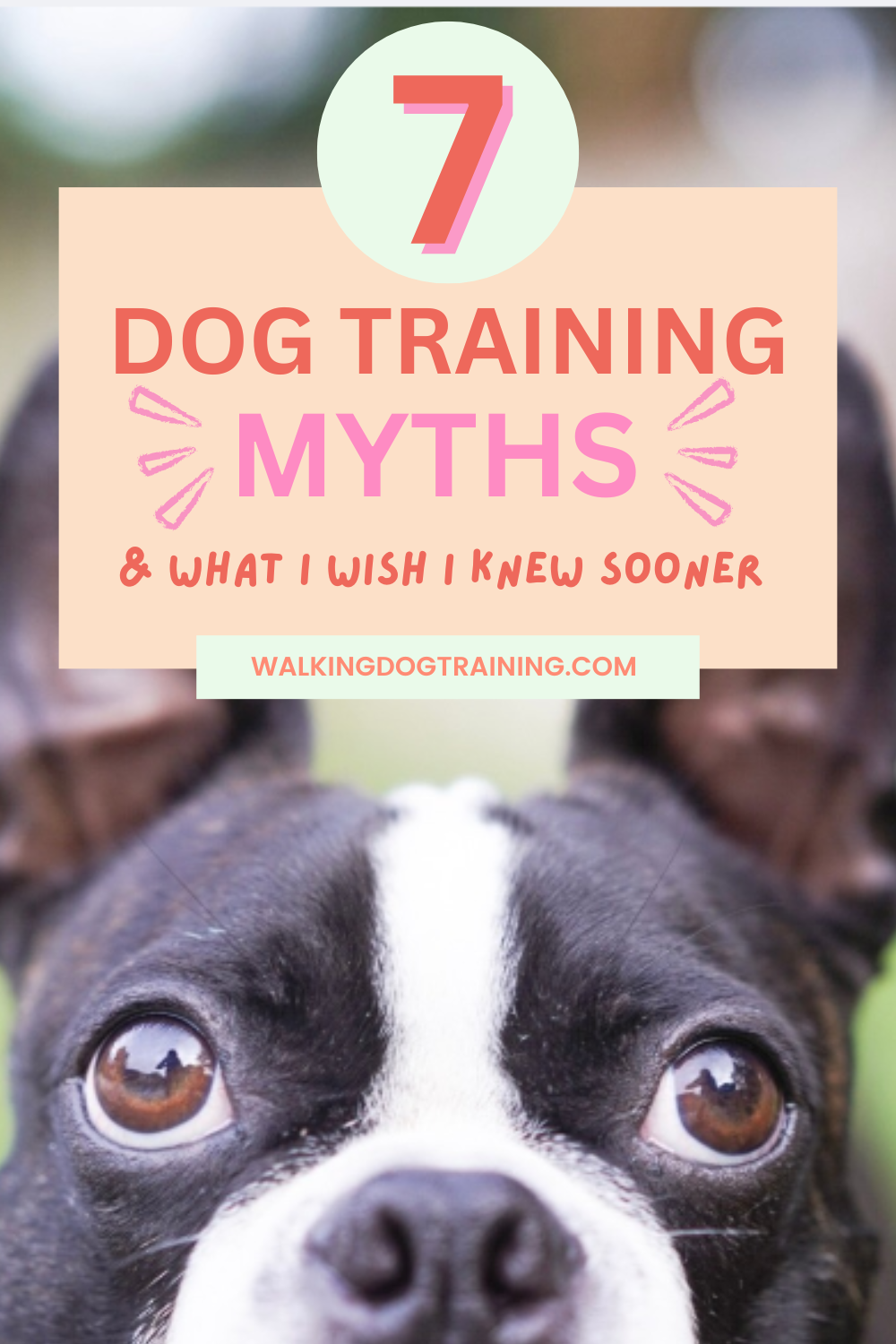7 Dog Training Myths
As a trainer, I hear all the things about dog training from fellow trainers, owners, and people I talk to about my job. Some true, some not. I’m here to debunk some of those misconceptions & I’m betting you’ve heard some of them too!
Myth: If you are struggling with your dog, you should exercise them more
Exercising your dog is essential and should be a part of every owner's routine. But- if you are using it to deter unwanted behaviors, you’ll always need to exercise them more and more - soon it will feel like it's never enough. Could exercise be a good bandaid on the situation, possibly. Will it solve the problem long term? Unlikely. So, if you are someone who is exercising your dog a ton and still struggling with stuff, there's a reason. You have to address the problem head on to make it a thing of the past. Not try to out run it.
Myth: You shouldn’t use the crate once your dog is potty trained
Kennels are not the enemy (gasp-I know) and can have such benefits for some dogs. You can use the kennel for your dog as long as you'd like. You can also stop using it if you'd like (catching my vibe here?). Remember, dog training is so dependent on not only the dog and their behaviors but also the owners and their preferences. For many dogs it's a helpful way to manage when you are away & it can help them practice calmer behaviors when alone. For owners, continuing to kennel train can be helpful for times when your dog needs to be boarded by someone who uses a kennel, in emergencies if needed, and just because it helps your dog feel safe. Whatever the reason, you don’t have to phase it out and it can continue to be a training tool for as long as you see fit for you and your dog.
Myth: The focus of dog training is the dog
Many of you already know this - but just in case you are new here - a big part of dog training is about you. Your behaviors. Your patterns. Your willingness to change things if that's what is best for your dog. Afterall, one of my taglines here at Walking Dog Training is training solutions for the struggling owner, not ...for the struggling dog. A prime example of this is how tough it is for many dog owners to say “No, you can't pet my dog.” Seems simple, but brings up a lot of people - pleasing behaviors that stem from a lifetime of conditioning. As owners, part of training our dog is also owner training. Many times, owners find that dog training shines a light on their own insecurities and paves the path for a lifetime of relearning. Owners who take the time to learn how to set boundaries for themselves and their dogs get the most bang for their buck in the dog training department. You should be learning alongside your dog.
Myth: If the reactivity doesn't go away after training, you aren't trying hard enough.
Working through reactivity can be really challenging. Reactivity in dogs can stem from many years of insecurities, trauma, or learned behaviors that have never been addressed. Depending on your dog's age you may need to learn to manage your dog's reactivity instead of getting rid of it all together. Remember, training is not a *one and done* type of thing. It takes dedication and attention over time.
Myth: Small dogs are tougher to train
I once heard this from a few trainers and I was always nervous to get a small dog in for training. But here's what I found- small dogs are SO FUN TO TRAIN. Small dogs are known for (stereotypically) being more stubborn & communicative than larger dogs. I think, they just know how to speak their mind. What I’ve realized is, it's like they're waiting for someone to add clarity to situations and say, “hey, do this - not that” in a way that actually makes sense to them. The e-collar is a great way to create that line of communication. Do many small pups have that little dog attitude? Definitely. But it can make this new way of communicating so fun for the owner (and trainer). For me, I’m a big time little dog fan.
Myth: E-Collar training is the lazy way to train
*insert eye roll* Anytime I hear this, it's a dead giveaway that the person has never actually tried the e-collar. Or, even better, thinks it’s a shock collar (see my blog post on the difference between shock collars & e-collars). Can it help you stop some things like jumping or biting almost instantly? Sometimes, yes, and it’s great when it does work for a dog so well! But some of you know how nuanced it can be. When you are e-collar training (and all dog training for that matter) you are creating a new way of communicating with your dog. You are teaching them what you want them to do through this new way of “talking.” Is that easy? No. It takes time for your dog to learn what you are asking of them and how to shift their behavior to meet your expectations. It takes time, stacking good moments and knowing what works best for your dog to truly feel like you're getting the most out of e-collar training. I do think the lazy way to train is telling an owner to avoid all situations that make their dog reactive or get pushy- just sayin’. Avoidance is not helpful. But it sure is easy.
Myth: Your dog should be social with everyone
Not all dogs love other people or dogs and that's okay. Same goes for us humans, right? I mean, I don't know about you but the older I get the more introverted I become. And sometimes being in groups of people makes me anxious. Does that make me bad? Or any less of a person? Of course not & we would most definitely not judge someone if they didn’t want to be social with everyone. We all have our people we enjoy being social with. Same goes for our dogs. And I know sometimes it can suck (I have a couple of unsocial dogs myself), but that's why dog training can look so different based on the dog in front of you. The best dog owners know their dogs' social limitations and advocate for them in social situations. Worth remembering the next time you get stuck in comparison mode.





